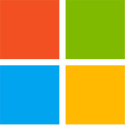RICOH Launches Portable 15.6-inch OLED Displays
PFU America, Inc., the U.S.-based subsidiary of PFU Limited and the leader in digital transformation solutions, today announced the launch of the RICOH Portable Monitor Series. Designed as an easily accessible, portable extra screen for enhanced creative collaboration, the new RICOH monitors feature vivid picture quality, a touch screen for drawing and writing, and the option of wired or wireless connectivity.
The RICOH Portable Monitor Series is available in two versions - a 150 wired model and the battery-powered 150BW wireless model. These new monitors are the world's lightest compared to other 15.6 inch touchable OLED products currently on the market, with the wired model weighing in at just over one pound - including the integrated stand, and despite having a touch display - with a super-slim bezel of less than one-fifth of an inch. Both monitors feature a 15.6" OLED display with exceptional image quality, including better contrast, higher brightness and rapid response time. Built for portability, two USB-C inputs near the center of the device enable easy connectivity to video display, or so that two devices connected wirelessly, such as a PC and a smartphone, can be connected at the same time, enabling switching between displays at the touch of a button. An integrated stand, cable management, and two integrated speakers make it easy to set up and manage power, input, and speaker controls.
The RICOH Portable Monitor Series is available in two versions - a 150 wired model and the battery-powered 150BW wireless model. These new monitors are the world's lightest compared to other 15.6 inch touchable OLED products currently on the market, with the wired model weighing in at just over one pound - including the integrated stand, and despite having a touch display - with a super-slim bezel of less than one-fifth of an inch. Both monitors feature a 15.6" OLED display with exceptional image quality, including better contrast, higher brightness and rapid response time. Built for portability, two USB-C inputs near the center of the device enable easy connectivity to video display, or so that two devices connected wirelessly, such as a PC and a smartphone, can be connected at the same time, enabling switching between displays at the touch of a button. An integrated stand, cable management, and two integrated speakers make it easy to set up and manage power, input, and speaker controls.































































